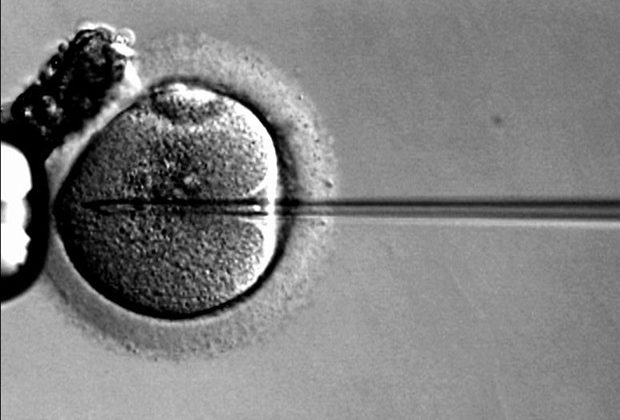 insights from industryDr. Ivan KrylovProduct Manager – Octet® BLISartorius
insights from industryDr. Ivan KrylovProduct Manager – Octet® BLISartoriusIn this article, News-Medical talks to Dr. Ivan Krylov about biosensing and bioprocessing in gene therapy, while also discussing the various products Sartorius produces in order to aid in this.
Can you provide an overview of the gene therapy market?
Considerable advancements in gene editing and gene delivery technologies in recent years have led to the rapid development of viable therapeutics based on gene therapy strategies. To date, the FDA has approved nine gene therapy products for clinical use.
In addition, there are currently more than 100 gene therapy drug candidates in clinical trials for a broad range of disorders, including cancers, hematological conditions, ocular diseases, neuromuscular diseases, immunodeficiencies, and rare or inherited disorders. A significant percentage of these gene therapies are based on the use of the adeno-associated viral (AAV) vector, one of the most promising vectors for gene delivery.
From a financial perspective, the global gene therapy market is valued at 2.9 billion US dollars, with a projected compounded annual growth rate of approximately 20% for the next eight years.
Despite the rapid growth of the gene therapy market, manufacturing these therapeutics continues to be a challenge due to the complexity of the production process.
At Sartorius, our goal is to simplify and accelerate progress in life science and bioprocessing. One of the solutions we offer utilizes the Octet® Bio-Layer Interferometry (BLI) platform and was developed to help with the production of AAVs by simplifying the measurement of AAV capsid titer during bioprocessing.
Can you explain why AAV capsid titer is important for bioprocessing in gene therapy development, and what are some of the technologies used to quantitate AAV capsid titer today?
Adeno-associated viral vector is widely used for the delivery of genetic material in gene therapy, and AAV capsid titer is a critical quality attribute that must be monitored throughout process development and quality control. Development and production of AAVs at an industrial scale requires efficient methods for accurate quantification of viral capsids.
Traditional techniques such as ELISA, HPLC, and ddPCR are time-consuming and labor-intensive. For example, AAV titer measurement using ELISA requires six steps and could take 3-4 hours to complete, and ddPCR could take 6 hours.
In contrast, on the Octet® BLI platform, similar results could be achieved in just one step and in as little as 15 minutes.
For those who are not familiar with the Octet® BLI platform, could you describe the technology and how it works?
Octet® BLI systems enable real-time, label-free analysis for the determination of kinetics, affinity, and concentration.
The platform includes instruments, biosensors, reagents, assay kits, and software for the detection and analysis of biomolecular interactions. They are used throughout biotherapeutic discovery, development, manufacturing, and quality control to simplify and streamline the measurement of process and product attributes.
Bio-Layer Interferometry, or BLI, is an optical technology that utilizes fiber-optic-based biosensors that are coated with different chemistries for ligand immobilization. The systems monitor bio-layer thickness shift over time. A binding response is measured as a function of increasing biomolecular density on the biosensor surface. Only molecules binding to or dissociating from the biosensor cause a detectable signal.
Measurements that ordinarily require high sample volumes, complex setup, or excessive time and labor, can be run efficiently and with minimal effort on the Octet® BLI platform. To learn more about this technology and watch an introductory video, please visit our website.
Sartorius recently launched a new Octet® AAVX Biosensor. Can you provide a brief overview of the product?
Octet® AAVX Biosensors provide a rapid, label-free, and high-throughput method for AAV capsid titer measurement. These biosensors are pre-immobilized with Thermo ScientificTM CaptureSelectTM Biotin-Anti-AAVX Conjugate from Thermo Fisher Scientific Inc., which binds with high affinity and specificity to various native and recombinant AAV serotypes, including AAV1 to AAV9 and AAVrh10.
Due to its high specificity, the biosensor can be used to quantitate AAV capsids in both purified and crude cell culture samples with titer in the range of 8.5E8 – 1.0E13 vp/mL for most serotypes.
What benefits does the new Octet® AAVX Biosensor have for AAV titer measurement compared to the current technologies on the market? Can you provide an example of how it is used?
ELISA has traditionally been used to measure AAV viral capsid numbers and is often considered the method of choice for AAV titer measurement.
The Octet® AAVX assay provides a viable solution to some of the limitations associated with ELISA, such as the thin data sets provided by end‑point assays, as well as the considerable time and effort it takes to perform the measurements.
Additionally, the Octet® BLI system design allows for rapid assay setup and analysis. Another key benefit is that data analysis is displayed in real-time, providing the ability to monitor and optimize every assay step.
As an example I’ll use data provided by one of our customers. Scientists at this company tested three AAV serotypes, including AAV8 and AAV9 with AAV capsid titer from 8.8E8 to 1.0E13 vp/mL range; first the crude samples with unknown AAV titer were diluted with our Octet® Samples Diluent buffer and then simply aliquoted into a 96-well sample plate followed by a one-step dip of the Octet® AAVX biosensors. Binding response data was analyzed plotted on the standard curve generated using serotype specific standard reference samples. And the AAV titer in the unknown samples was derived from the standard curve. A good % recovery (80–120%) and precision (CV <10%) was observed for all concentrations tested within this dynamic range. Also, the customer saw a good correlation between the Octet® AAVX assay and ELISA.
Octet® BLI systems, in combination with Octet® AAVX Biosensors, offer a rapid, label-free, and high-throughput method for the quantification of AAV capsids, delivering results for 96 samples in as little as 15 minutes and can be used to quantitate AAV capsids in both crude and purified samples.
Are there any other applications in AAV and gene therapy space that could be simplified with the Octet® BLI platform in the future?
At Sartorius, we are committed to providing customers with solutions that simplify progress. This encompasses a continual improvement process where we listen to the customer, collecting information on their needs and wants, as well as market changes.
We use this information to continue to enhance the capabilities of our existing portfolio, as well as in the development of new solutions. As gene therapy is a growing and evolving market, I am confident that our portfolio will evolve and keep pace with customer needs and market trends.
About Dr. Krylov
Ivan Krylov is a Product Manager currently responsible for the Octet® Bio-Layer Interferometry (BLI) Consumables portfolio. He joined Sartorius in 2020 and leads the company’s effort to expand the consumables portfolio with products enabling new applications on the Octet® BLI Platform. Prior to this role, Ivan worked in Product Development for 10 years in both industry and academic settings developing instruments and consumables for various applications in Biotech. His experience is truly diverse and ranges from Product Management to Assay Development and Medicinal Chemistry. Ivan earned his PhD in Chemistry from the University of Southern California.

Sponsored Content Policy: News-Medical.net publishes articles and related content that may be derived from sources where we have existing commercial relationships, provided such content adds value to the core editorial ethos of News-Medical.Net which is to educate and inform site visitors interested in medical research, science, medical devices and treatments.
